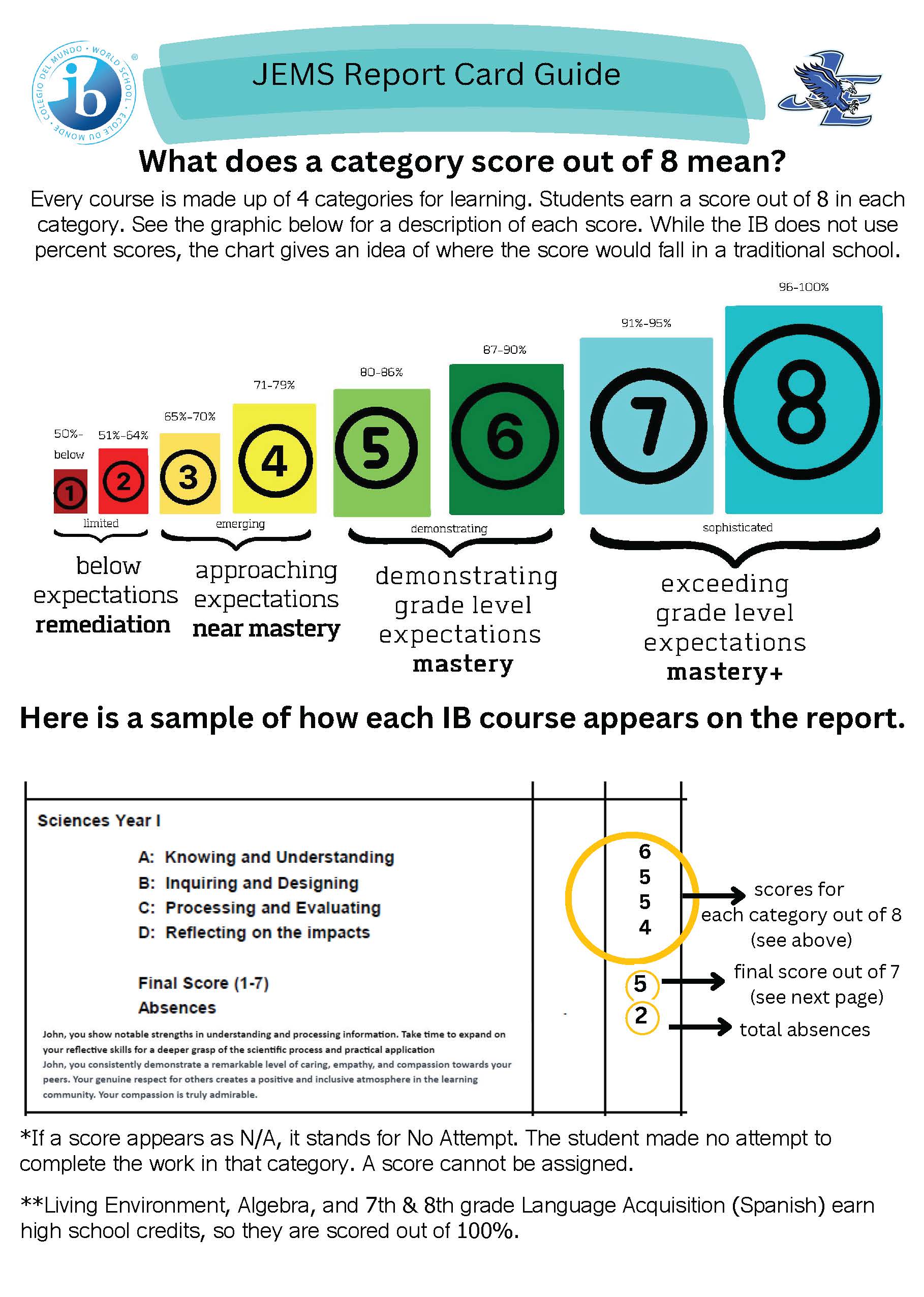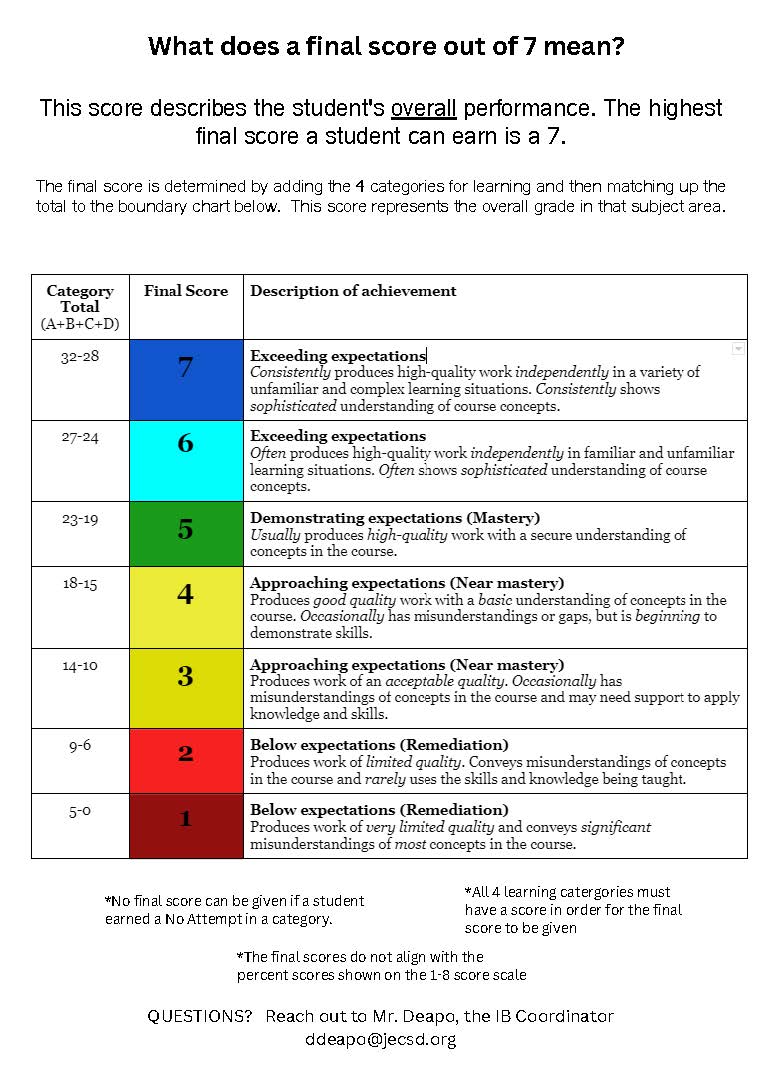Jordan-Elbridge Middle School Assessment Policy
We are excited to welcome you to the IB (International Baccalaureate) program at Jordan-Elbridge Middle School! Our grading system may look different from what some families are used to. For example, in traditional grading, a “D” often indicates a barely passing grade. In the IB program, however, a “D” stands for Demonstrating, which means a student is performing at grade level.
Our assessments are designed to give a complete picture of student learning:
Formative assessments (ongoing checks for understanding) are represented by letters: L (Limited), E (Emerging), D (Demonstrating), and S (Sophisticated). These letters indicate where a student is on the learning scale and provide feedback for growth.
Summative assessments (end-of-unit evaluations) are scored on a 1–8 scale, with 1–2 = Limited, 3–4 = Emerging, 5–6 = Demonstrating, and 7–8 = Sophisticated. These scores are rubric-based, so students know exactly what they need to do to improve.
We encourage you to refer to the chart below to see how IB scores align with traditional percent and mastery scales. An “NA” indicates that no attempt was made on the assignment.
Through the IB learner profile and this detailed feedback system, our goal is to foster both academic growth and personal development. We will provide additional information throughout the year to help families and students understand and navigate the IB program successfully.
If you have any questions, please don’t hesitate to reach out to me at any time.
Sincerely,
Drew Deapo
IB Coordinator, Jordan-Elbridge Middle School






